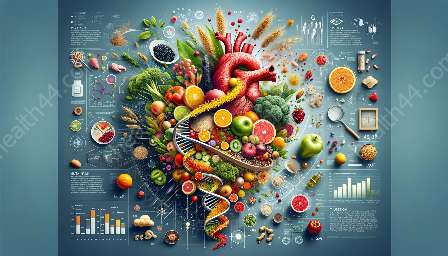When it comes to nutrition, bioactive compounds play a crucial role in enhancing the health benefits of our food. These compounds, found in a variety of natural sources, such as fruits, vegetables, herbs, and spices, are known for their potential positive effects on human health.
The Significance of Bioactive Compounds in Food
Bioactive compounds encompass a wide range of substances, including vitamins, minerals, polyphenols, flavonoids, carotenoids, and other phytochemicals. They are believed to have protective properties that can support overall well-being and may reduce the risk of chronic diseases when consumed as part of a balanced diet.
Understanding Bioavailability
Bioavailability refers to the proportion of a nutrient or bioactive compound that is absorbed and utilized by the body after it is ingested. Factors such as the food matrix, processing methods, and individual differences can influence the bioavailability of these compounds. For instance, the presence of certain macronutrients, such as fats, can enhance the absorption of fat-soluble compounds like carotenoids and vitamin E.
Challenges of Bioavailability
However, not all bioactive compounds have high bioavailability. Some may be poorly absorbed due to their chemical structure or the presence of anti-nutritional factors in food. This makes it essential to consider strategies that can improve the bioavailability of these compounds, ensuring that they deliver their intended health benefits.
Importance of Bioaccessibility
Bioaccessibility is another critical concept to consider when discussing bioactive compounds in food. It refers to the amount of a compound that is released from the food matrix during digestion and becomes available for absorption. Factors such as food processing, cooking methods, and the presence of fiber can affect the bioaccessibility of these compounds.
Factors Affecting Bioavailability and Bioaccessibility
Several factors can influence the bioavailability and bioaccessibility of bioactive compounds in food. These include:
- Food Matrix: The form in which the compounds are present, such as free or bound to other food components, can impact their absorption.
- Processing Methods: The way food is processed, cooked, or stored can affect the release and absorption of bioactive compounds.
- Gut Microbiota: The composition of the gut microbiota can influence the metabolism and utilization of these compounds in the body.
- Individual Variability: Genetic, physiological, and lifestyle factors can contribute to individual differences in the absorption and utilization of bioactive compounds.
Health Benefits of Bioactive Compounds
Consumption of bioactive compounds has been associated with various health benefits, including antioxidant and anti-inflammatory effects, cardiovascular protection, and potential anti-cancer properties. Additionally, some compounds have been linked to improved cognitive function and overall longevity.
Optimizing Bioavailability and Bioaccessibility
To maximize the bioavailability and bioaccessibility of bioactive compounds in food, various strategies can be employed:
- Combining with Nutrient Enhancers: Pairing certain bioactive compounds with nutrients known to enhance their absorption, such as consuming vitamin C with non-heme iron sources.
- Food Pairing: Some bioactive compounds may benefit from being consumed alongside specific foods that can enhance their absorption or bioavailability.
- Optimizing Processing Techniques: Choosing cooking methods that preserve the integrity of bioactive compounds or increase their release from the food matrix can be beneficial.
- Utilizing Food Synergies: Certain combinations of foods may create synergistic effects that improve the bioavailability and bioaccessibility of bioactive compounds.
Conclusion
Understanding the bioavailability and bioaccessibility of bioactive compounds in food is essential for optimizing their health benefits. By exploring the factors that influence their absorption in the body and the potential strategies to enhance their utilization, individuals can make informed choices to support their overall nutrition and well-being.


